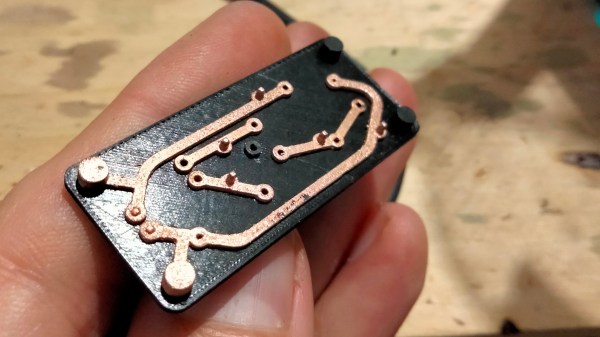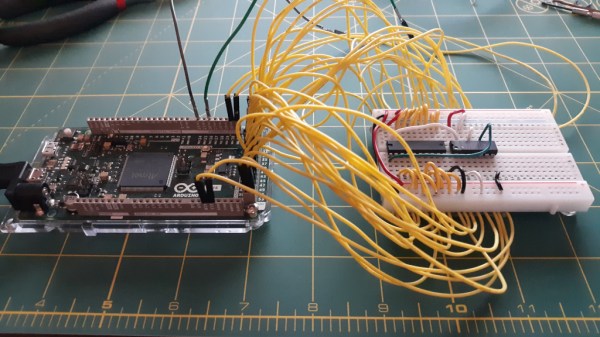For anyone dabbling in home chemistry, having access to accurate measurement equipment can mean the difference between success and failure. But with many instruments expensive and hard to find, what’s a home chemist to do? Build their own equipment, naturally. [Abizar] went ahead and built himself a colorimeter out of wood and spare electronic components.
A colorimeter (in a chemistry context) is an instrument that determines the concentration of a solution by measuring how much light of a certain wavelength is absorbed. [Abizar]’s design was inspired by the classic Klett-Summerson colorimeter from the 1950s, which uses a light bulb and color filters to select a wavelength, plus a photoresistor to measure the amount of light absorbed by the sample. Of course, a more modern solution would be to use LEDs of various colors, which is exactly what [Abizar] did, although he did give it a retro touch by using an analog meter as the readout device.
The body of the colorimeter is made from laser-cut pieces of wood, which form a rigid enclosure when stacked together. The color wheel holds eleven different LEDs and is made with a clever ratchet mechanism to keep it aligned to the cuvette, as well as a sliding contact to drive current into the selected LED. All parts are painted black to prevent stray reflections inside the instrument, but also make it look cool enough to fit in any evil genius’s lab. In the video embedded below, [Abizar] demonstrates the instrument and shows how it was put together.
While we haven’t seen anyone make their own colorimeter before, we have seen DIY spectrophotometers (which measure the entire absorption spectrum of a solution) and even building blocks to make a complete biochemistry lab.
Continue reading “Classic Colorimeter Clone Calibrates Cuvettes’ Contents”

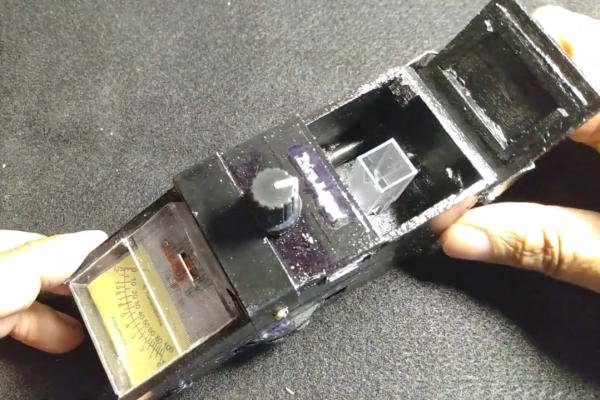

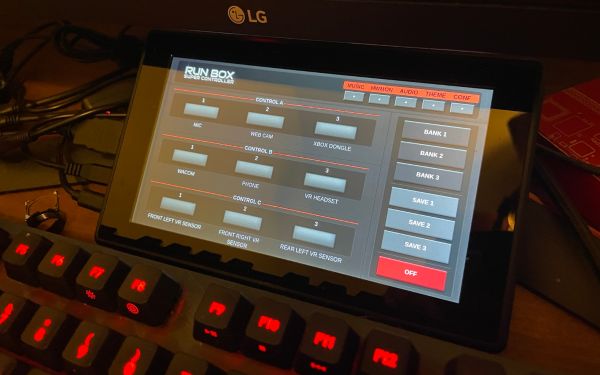
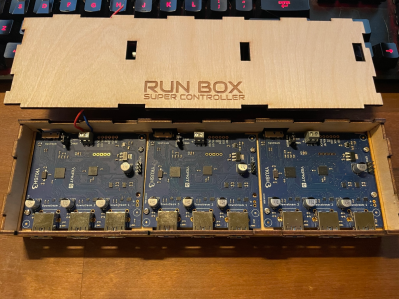 The modified USB hub is housed in a laser-cut enclosure with plenty of space to hook up a variety of USB devices. The touchscreen neatly fits just above [Matt]’s keyboard; this setup was inspired by head-down displays used in aircraft which similarly use a small additional screen for peripheral functions.
The modified USB hub is housed in a laser-cut enclosure with plenty of space to hook up a variety of USB devices. The touchscreen neatly fits just above [Matt]’s keyboard; this setup was inspired by head-down displays used in aircraft which similarly use a small additional screen for peripheral functions.
